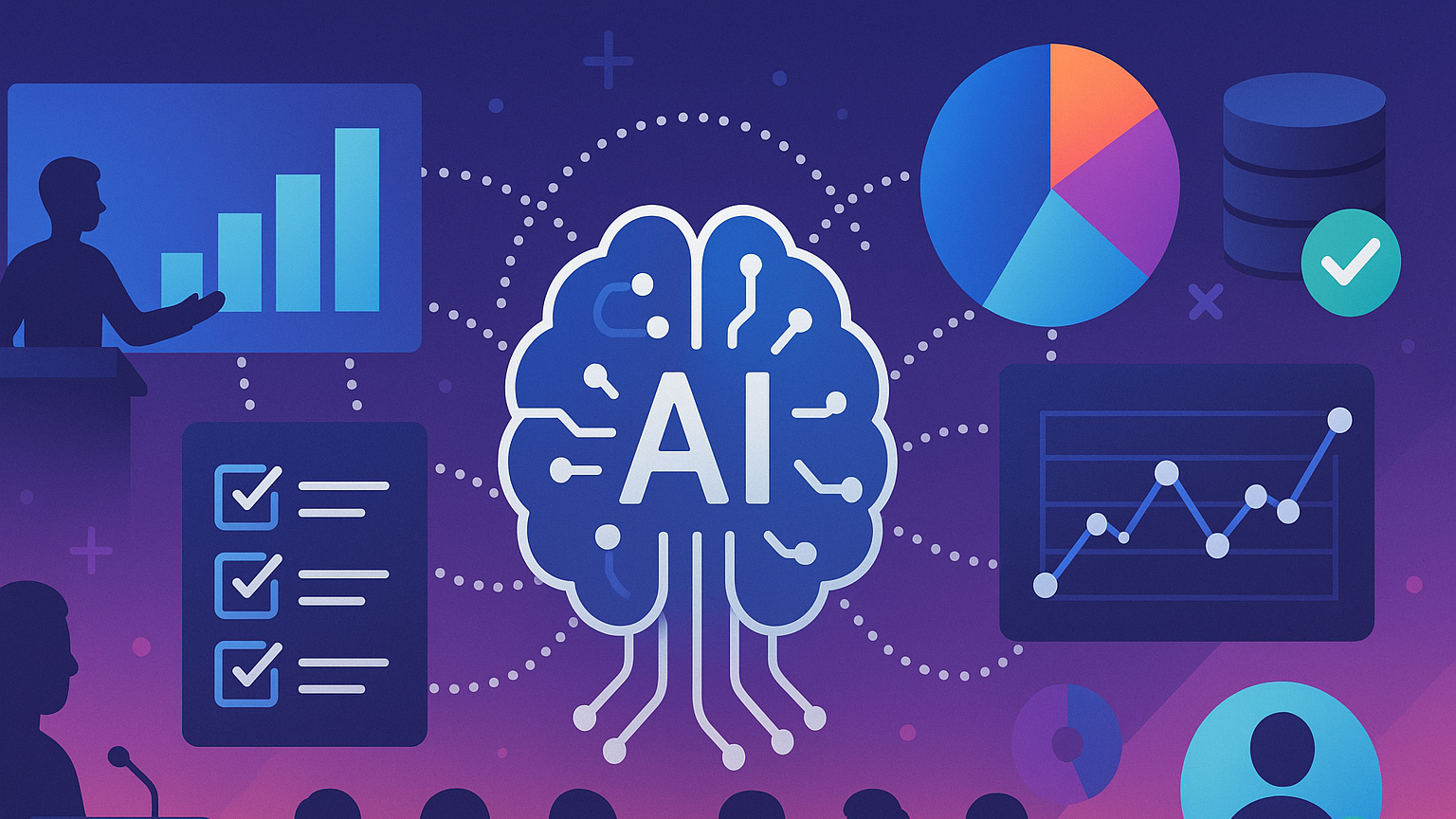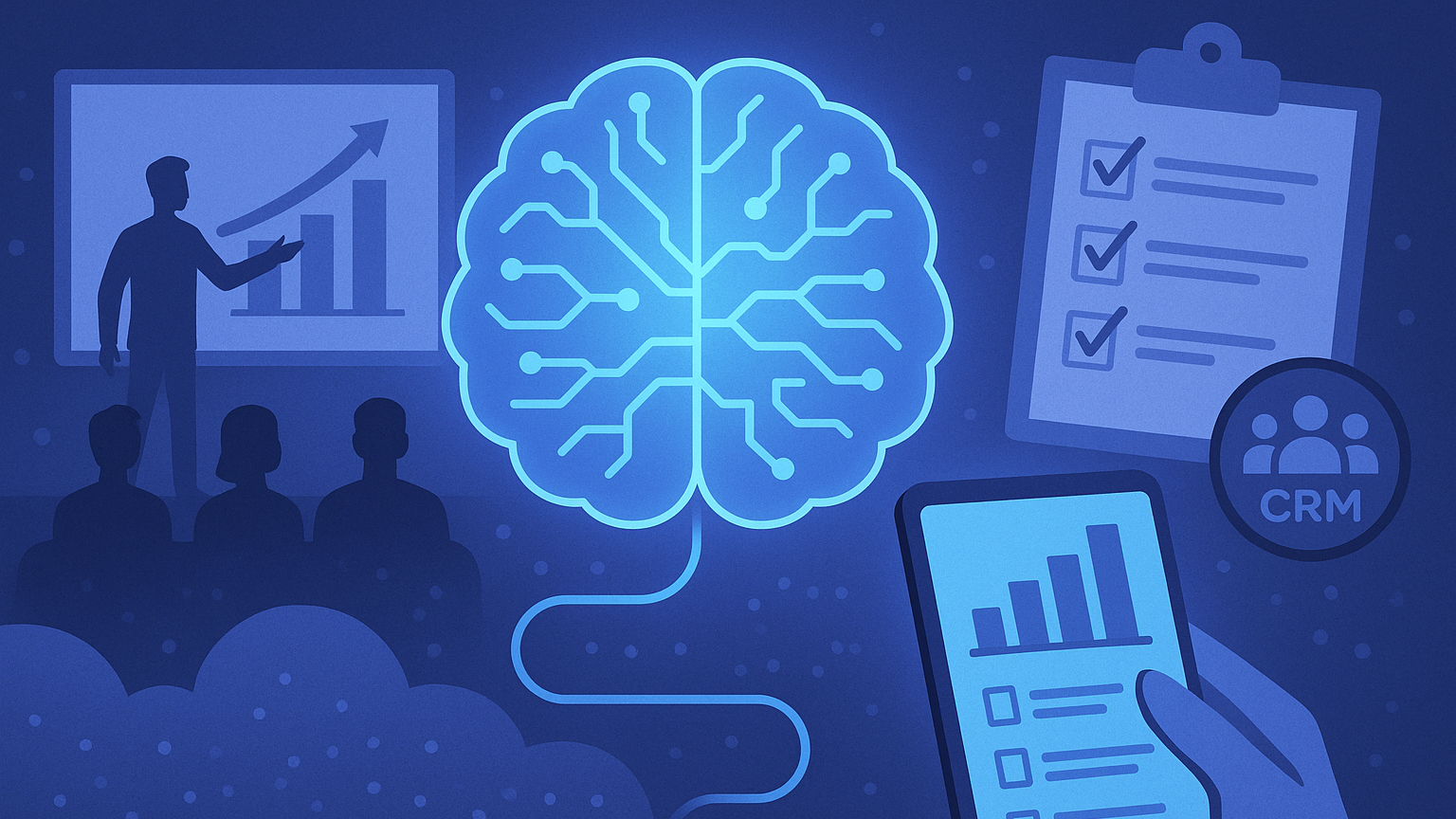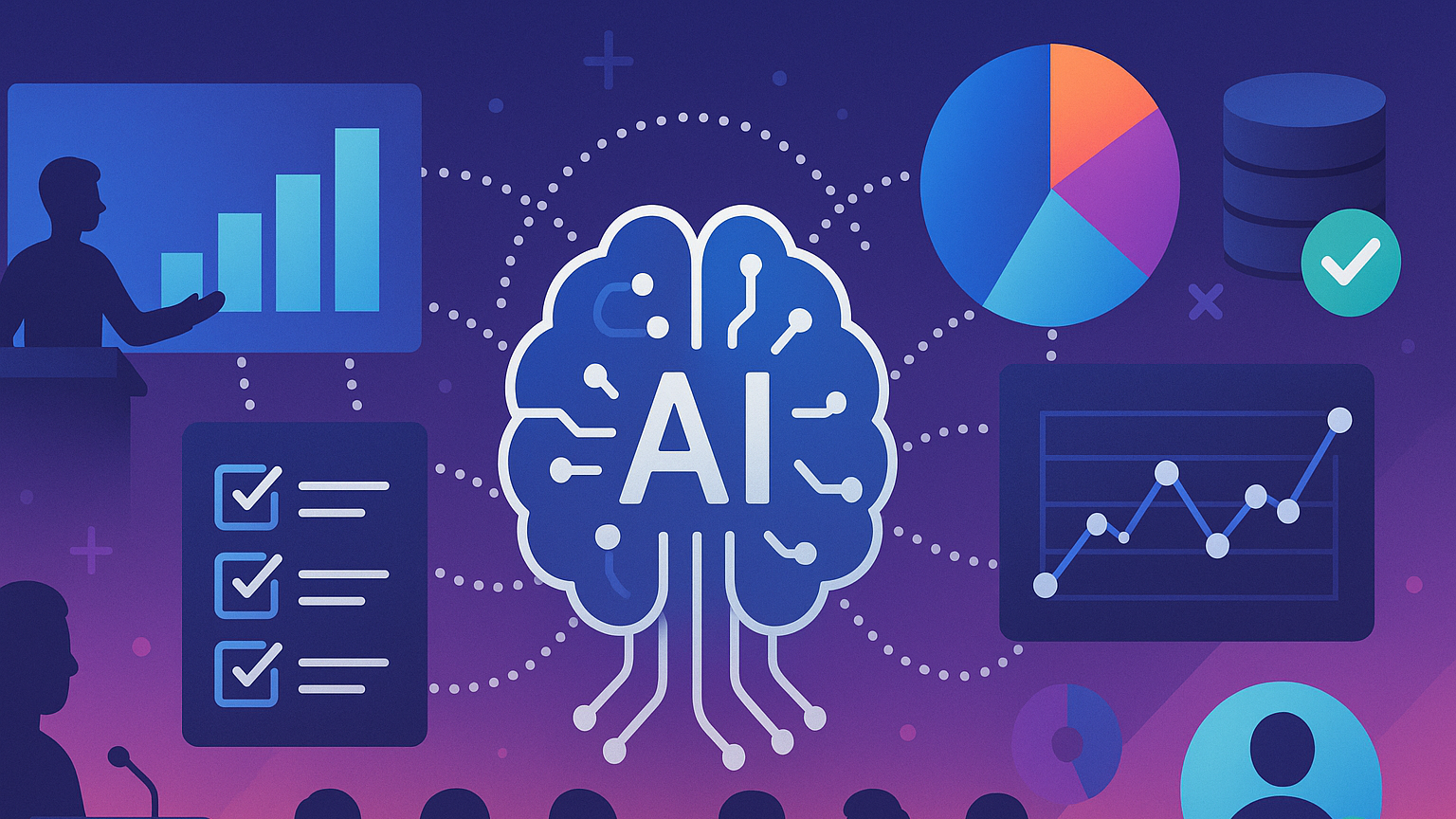
AI-driven Post-event Evaluation and Follow-up for Event Management and Operational Excellence
You know that the work doesn’t end when the lights go down and attendees leave. Post-event evaluation and follow-up are where you close the loop, capture value, and turn lessons into improvements for your next event. AI can turbocharge that process, helping you extract actionable insights quickly, personalize follow-up at scale, and embed continuous operational improvement into your event lifecycle. This article helps you understand how AI fits into post-event workflows and how to apply it to achieve operational excellence across sectors.

Why AI matters for post-event evaluation and follow-up
You’re probably measuring basics like attendance and revenue, but AI helps you move beyond raw numbers to find the stories behind them. AI analyzes qualitative and quantitative data together—surveys, audio, video, engagement logs, and CRM behavior—to reveal sentiment, patterns, and causal relationships that manual review would miss or take weeks to produce.
Using AI in this phase reduces time-to-insight, improves accuracy, and scales personalized engagement. That means you can follow up with leads faster, optimize staffing and layout for future events, and prove ROI to stakeholders with richer evidence. In short, AI helps make your post-event work strategic rather than merely administrative.
Core components of AI-driven post-event evaluation
AI-driven post-event evaluation typically combines several capabilities: natural language processing (NLP) for text and speech, computer vision for visual content, machine learning for pattern detection and prediction, and automation for executing follow-up actions. Each component contributes to a unified picture of attendee experience and event performance.
NLP transforms open-ended survey responses, session feedback, and social media chatter into structured sentiment and topic models. Computer vision analyzes video streams or photos to measure crowd flow, queue lengths, or engagement levels. Machine learning models identify which behaviors predict conversions and help you prioritize follow-up. Automation systems then trigger emails, task assignments, and CRM updates based on those insights.
Key data sources to feed AI models
You need diverse and reliable data to make AI effective. Typical sources for post-event AI include registration and badge-scan logs, session attendance data, mobile app interactions, Wi‑Fi and location traces, social media posts, recorded presentations and transcripts, attendee surveys, sponsor/booth engagement metrics, and CRM history.
Collecting this data responsibly and consistently makes your models more accurate. Make sure you plan data schemas and storage from the outset so you can join datasets later—matching session attendance to survey responses and CRM records, for example. The richer the merged dataset, the better your AI can map actions to outcomes.

Practical AI techniques for evaluation and insight
AI gives you a toolbox of techniques that map to different post-event needs. Sentiment analysis tells you whether feedback is positive or negative. Topic modeling groups common themes from open-text responses. Speaker/audio analytics summarizes presentations and extracts key quotes. Computer vision tracks crowd density and engagement signals like people turning toward a stage.
Recommendation systems and predictive models help prioritize high-value leads and forecast attendance for future events. Network analysis identifies influencers and relationship patterns among attendees. Anomaly detection flags unusual drop-offs in engagement that warrant investigation. Each technique helps you move from raw data to prioritized actions.
Transforming qualitative feedback into actionable intelligence
You probably collect open-text survey responses and post-event comments, but reading thousands of replies manually isn’t realistic. AI-powered NLP can classify feedback by theme, detect sentiment and emotion, and highlight representative quotes. That enables you to summarize major concerns and opportunities quickly and to drill down into specific segments—such as VIP attendees or sponsors.
By creating dashboards that surface top themes and trending sentiment over time, you can show stakeholders exactly what changed from past events and why. You’ll spend less time arguing about anecdotes and more time acting on substantiated feedback.
Making follow-up personalized and timely at scale
Timely, personalized follow-up increases conversion rates and improves sponsor satisfaction. AI helps you prioritize outreach and tailor messages. Lead-scoring models can rank post-event contacts based on engagement signals—session attendance, booth interactions, content downloads, and chat transcripts—so your sales team knows who to contact first.

Natural language generation (NLG) tools can draft personalized follow-up emails, summaries, or content recommendations based on what each attendee consumed or discussed. Automations then deliver those messages at optimal times and on preferred channels. The result: you nurture relationships more effectively without adding manual workload.
Measuring ROI with AI-powered attribution
Proving event ROI is often the trickiest part of the job. AI makes attribution more sophisticated by modeling the multiple touchpoints that lead to a conversion. Instead of relying on simple last-touch models, you can use multi-touch attribution models that weigh each interaction—email clicks, session attendance, booth demos, content downloads—according to historical conversion patterns.
Predictive analytics can also forecast lifetime value from event interactions, helping you compare the cost-per-lead to expected revenue. This improves budgeting decisions and helps justify investments in event features, technology, or experiential elements.
Use cases across different sectors
AI-driven post-event evaluation and follow-up are valuable in many industries, and the specifics change with your sector. In B2B conferences, you’ll focus on lead qualification and sales conversions. For trade shows, booth engagement and sponsor ROI are paramount. Festivals and large public events emphasize crowd management and safety analytics. Sports and entertainment events look closely at fan engagement, merchandise behavior, and loyalty activation. Higher education events and alumni gatherings use AI to strengthen donor engagement and program evaluations.
Understanding the KPIs and priorities for your sector helps you choose the right AI tools and configure models to deliver meaningful outcomes for your business context.

Operational excellence: linking evaluation to continuous improvement
Operational excellence requires that you not only measure outcomes but also embed lessons into processes. AI enables closed-loop improvement: post-event insights generate prioritized tasks, which feed into process changes and staffing adjustments for the next event. For example, if AI reveals long lines at registration, you can adjust staffing and layout, then monitor results at the next event to validate improvements.
AI also supports standardization by codifying best practices into automated workflows and checklists. Over time, these refinements reduce variability, increase predictability, and drive efficiency—key goals of operational excellence.
Choosing KPIs and performance metrics that matter
You’ll want to measure both operational and strategic KPIs. Operational KPIs include registration-to-attendance rate, session no-show rates, queue length and wait times, on-site check-in times, and staff utilization. Strategic KPIs include lead conversion rate, sponsor NPS, attendee satisfaction, net promoter score (NPS), and event ROI.
Make sure your AI models are trained to predict or explain the metrics that align with stakeholder priorities. Avoid metric overload—pick a balanced set that covers experience, engagement, safety, and financial outcomes so your post-event actions are focused.
Tools and platforms for AI-driven evaluation
There are categories of tools that you can integrate into your post-event stack: analytics platforms (for dashboarding and BI), specialized event analytics suites (that ingest badge scans and app data), NLP and speech-to-text services (for transcripts and sentiment), computer vision tools (for crowd analytics), CRM and marketing automation systems (for follow-up), and orchestration platforms (to automate actions).
You don’t need to build everything from scratch. Many organizations combine best-of-breed cloud AI services with an event data layer and orchestration engine to get the right mix of customization and speed-to-value. When selecting vendors, focus on integration capabilities, data governance, and model explainability.
Data governance, privacy, and compliance
You’ll be handling personal and behavioral data, so data governance and privacy are non-negotiable. Ensure you have clear consent mechanisms, data retention policies, and encryption both in transit and at rest. Anonymize or aggregate data when possible for analytics, and limit access to personally identifiable information (PII) to those who genuinely need it.
You must also be aware of regional regulations—GDPR, CCPA, and other privacy laws—that affect how you collect and process data. Including privacy-by-design principles in your event tech architecture keeps your AI initiatives sustainable and trustworthy.
Building models and interpreting results responsibly
AI models are only as good as their data and design. You’ll need to validate models against historical events, check for bias, and ensure results are interpretable for stakeholders. For example, if a lead-scoring model favors visitors from certain companies, verify whether that pattern is a genuine signal or a dataset artifact.
Document model assumptions and performance metrics so you can explain recommendations to sponsors, leadership, or regulatory reviewers. Increasingly, explainability and auditability are part of your operational excellence commitments.
Integration with CRM and sales workflows
Your post-event AI insights should feed directly into your CRM and sales processes. Lead scores, recommended outreach scripts, and prioritized lists should be pushed into sales tools along with contextual notes on what the attendee did at the event and why they were scored as high priority.
Integrations should also support two-way flows so sales updates—like meeting outcomes or new pipeline entries—can refine your models. This creates a virtuous cycle where AI gets smarter as teams act on its recommendations.

Automation and orchestration for follow-up
Automation helps you act quickly. You can trigger email sequences, schedule follow-up calls, assign tasks to sales reps, or send sponsor reports automatically based on defined rules or model outputs. Orchestration platforms let you chain actions together: for example, when AI marks a lead as “hot,” create a CRM lead, assign it to a rep, and send a personalized email within 24 hours.
Automation not only speeds response time but also reduces human error and ensures follow-up consistency—an important contributor to operational excellence.
Visual and video analytics for engagement measurement
Video and images captured during the event are rich but underused sources of insight. Computer vision can estimate crowd sizes, detect dwell times at booths, and infer engagement levels based on gestures or facial orientation (subject to privacy limits). Reviewing session recordings with automated transcription and highlight extraction helps you create content packages faster and identify standout moments for marketing or sponsorship deliverables.
These visual analytics help you quantify experiential elements—such as how often people engaged with an interactive exhibit—that are otherwise difficult to measure.
Handling unstructured data: transcripts, social, and chat
Unstructured data like session transcripts, chat logs, and social media posts is where AI shines. Automatic transcription combined with NLP lets you search across speeches and panels for themes or commitments made on stage. Chat analysis helps you identify common attendee problems or questions raised during sessions. Social listening captures public sentiment and helps you benchmark against competitors or parallel events.
Treat unstructured data as a primary asset and invest in the pipelines needed to ingest, clean, and annotate it for AI consumption.
Operationalizing continuous learning loops
To get long-term value, you must operationalize learning. Set up routines where insights become tasks—action items assigned to owners with deadlines and success metrics. Monitor whether your interventions change the metrics you care about and loop results back into your models.
Make post-event retrospectives a regular practice. Use AI-generated summaries to prepare stakeholders quickly, so debriefs are focused on decisions rather than compiling data. Over time, your events will systematically get better because your organization learns faster.
Implementation roadmap: from pilot to scale
Start small and prove value quickly. Choose a specific use case—like automated sentiment analysis for surveys or lead scoring for follow-ups—and run a pilot with clearly defined success metrics. Measure time-to-insight improvements, conversion lift, or sponsor satisfaction changes. Once you have evidence, expand to adjacent use cases and integrate more data sources.
You’ll want to secure executive sponsorship, allocate cross-functional resources (ops, marketing, data, and legal), and define an integration plan with your tech stack. Gradual rollout reduces risk and helps you refine data governance, model performance, and user adoption.
Change management and skills you need
AI isn’t plug-and-play; people and processes matter. Train teams on how to interpret AI outputs, how to act on recommendations, and how to provide feedback that improves models. You’ll need data engineers, analytics professionals, and event operations staff who are comfortable with dashboards and automation rules.
Encourage a culture where insights drive experiments. Celebrate improvements that result from AI recommendations so teams see the tangible benefits of adopting new practices.
Common pitfalls and how to avoid them
AI initiatives fail most often for reasons you can avoid. Common pitfalls include poor data quality, lack of clear objectives, insufficient stakeholder buy-in, ignoring privacy rules, and treating AI outputs as infallible. Avoid these by cleaning and documenting your data, defining measurable goals, involving users early, embedding privacy-by-design, and keeping humans in the loop for final decisions.
Also watch for over-automation—some follow-ups need human judgment. Use AI to augment rather than completely replace empathetic, relationship-driven tasks.
Evaluating vendors and partners
When choosing technology partners, prioritize integrations, deployment speed, compliance, and model transparency. Look for vendors that offer clear APIs, good documentation, and proof points in your sector. Ask for references and request a live demo using a subset of your data where possible.
Consider starting with cloud-native AI services for NLP and vision, then layering event-specific analytics and orchestration. This approach helps you remain flexible and avoid vendor lock-in.
Ethics, fairness, and attendee trust
Ethical use of AI is critical. Be transparent with attendees about data collection and use, and offer opt-outs. Avoid profiling or automated decisions that could unfairly exclude people from opportunities. Regularly audit models for biased outcomes—especially when ranking leads or personalizing offers—to ensure fairness.
Trust is a competitive advantage. When attendees feel their data is used responsibly to improve their experience, you build stronger long-term relationships.
Measuring ROI and reporting outcomes
Build a reporting framework that ties AI activities to business outcomes. Combine short-term indicators (response times, email open rates, lead-response rates) with longer-term outcomes (pipeline value, sponsor renewals, cost-per-acquisition). Use before-and-after comparisons to attribute improvements to AI interventions while being mindful of confounding factors.
Tailor reports for different stakeholders: operational dashboards for event teams, ROI summaries for finance, and narrative-driven briefs for executives. Clear, concise reporting increases support for further investment.
Future trends to watch
AI capabilities will continue to evolve and make post-event processes even more powerful. Expect more real-time analytics during events, better multimodal models that combine audio, video, and sensor data, and increasingly sophisticated personalization engines that craft follow-ups based on behavioral micro-signals. Privacy-preserving ML techniques like federated learning and differential privacy will make advanced analytics safer.
Keeping an eye on these trends helps you plan upgrades and maintain competitive advantage in event excellence.
Quick checklist to get started
- Define 1–2 priority use cases (e.g., lead scoring, sentiment analysis).
- Inventory data sources and confirm consent/permissions.
- Run a pilot with clear success metrics and a short timeline.
- Integrate AI outputs with CRM and marketing automation.
- Establish data governance and model validation routines.
- Train teams on interpretation and operational workflows.
Conclusion
You want post-event evaluation and follow-up to be fast, evidence-based, and directly tied to business outcomes. AI helps you do that by turning complex, multi-source data into prioritized actions, personalized outreach, and measurable improvements in operational excellence. Start with focused pilots, build robust data governance, and keep humans at the center of decision-making. Over time, you’ll build a repeatable system that increases attendee satisfaction, improves sponsor ROI, and makes every event better than the last.
If you found this article useful, please clap, leave a comment with your thoughts or questions, and subscribe to my Medium newsletter for updates on AI in operations and event management.
